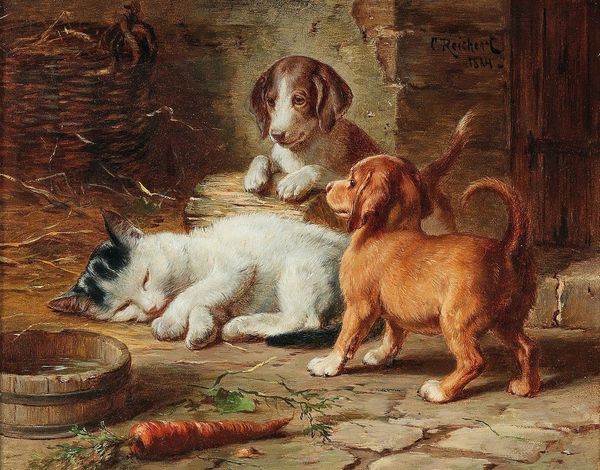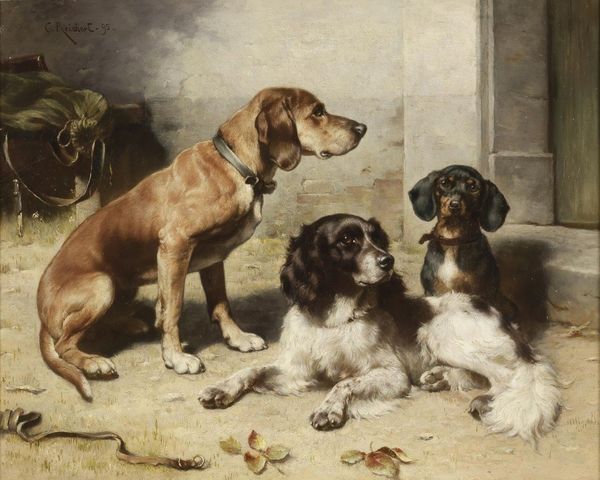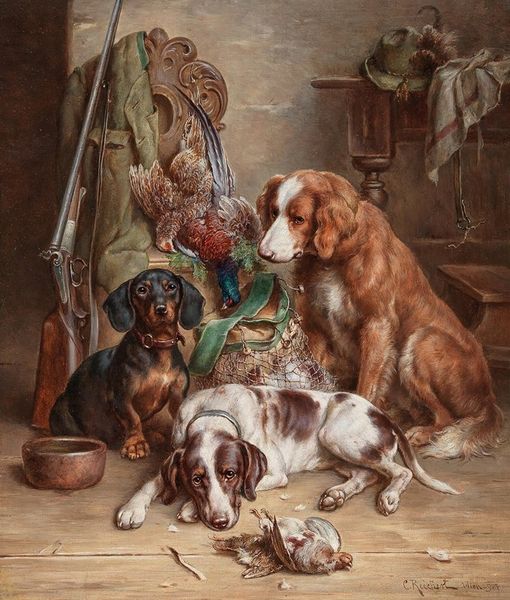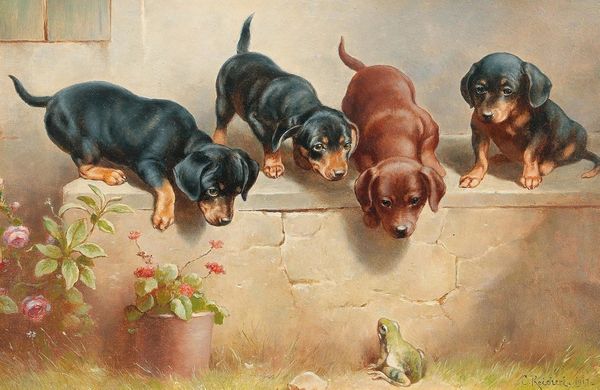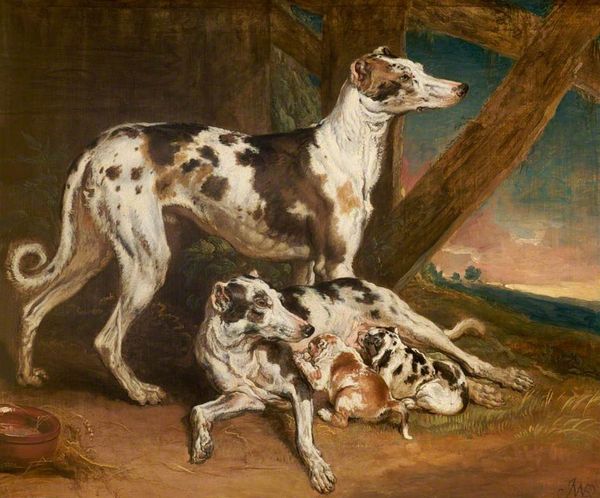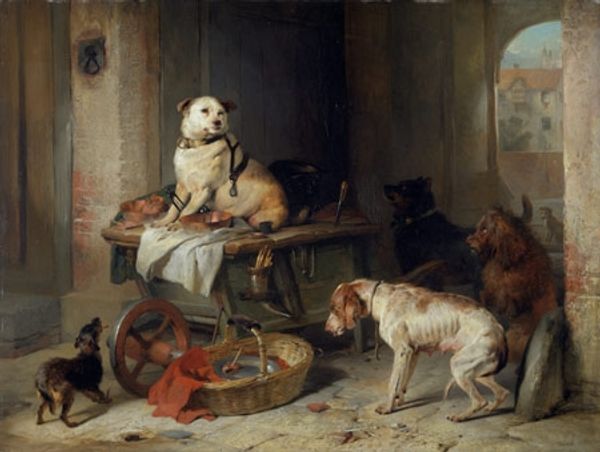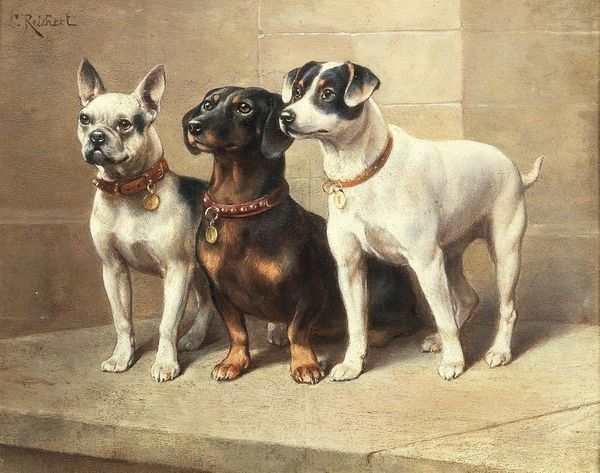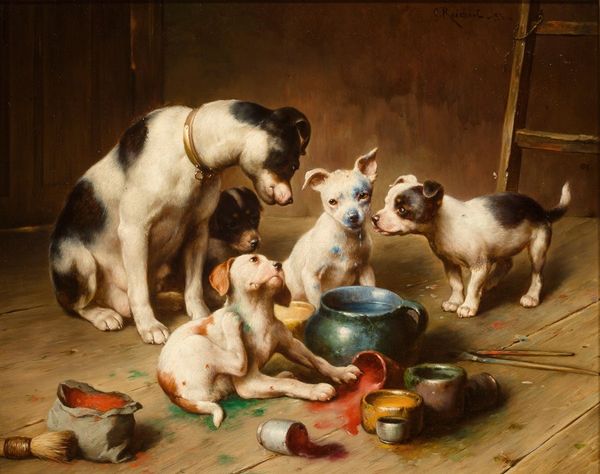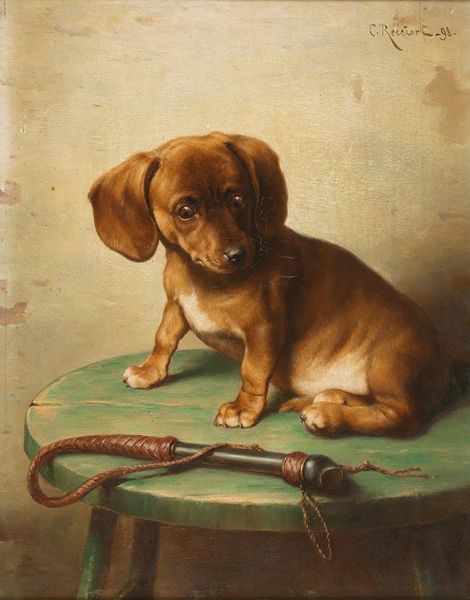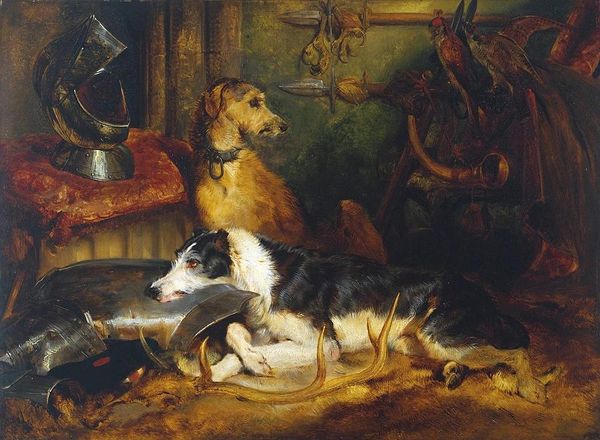
painting, oil-paint
#
portrait
#
gouache
#
animal
#
painting
#
oil-paint
#
oil painting
#
animal portrait
#
genre-painting
#
academic-art
#
realism
Copyright: Public Domain: Artvee
Editor: Here we have Carl Reichert’s "Beagle Puppies Feasting," painted in 1889 with oils. It is utterly charming and immediately made me smile. It seems like the puppies are creating chaos and mess! What does this work suggest to you? Curator: What's fascinating here is its embrace of sentimentality during a period defined by shifts in societal values and power structures. We see how genre painting like this found popularity within an emerging middle class eager to mirror aristocratic tastes, even down to canine portraiture. Consider the late 19th-century context: the rise of industrialization, shifts in land ownership. Does this idyllic portrayal perhaps function as a nostalgic retreat from the anxieties of rapid modernization? Editor: I hadn’t thought of it in those terms! It's easy to dismiss it as just a cute painting of puppies. So the act of idealizing this domestic scene has some real-world political connections. Curator: Precisely. The rising bourgeoisie consumed imagery that reinforced its values and aspirations. Who gets depicted and how – what’s valued and what isn’t – these choices are revealing about social currents. Note the style, firmly in the camp of Academic art, showcasing skillful realism while avoiding anything visually challenging. Who, do you imagine, commissioned or bought works like this? Editor: Someone wanting to demonstrate their good taste and their economic standing, maybe? So a painting of cute dogs could actually represent something much larger, like status and social anxieties! Curator: Exactly. Perhaps this artwork, beyond its surface charm, invites us to critically assess the relationship between art, power, and the construction of social narratives in a period of intense societal transformation. Editor: I'll never look at a puppy painting the same way again! It's fascinating how much history can be packed into such a seemingly simple image.
Comments
No comments
Be the first to comment and join the conversation on the ultimate creative platform.
